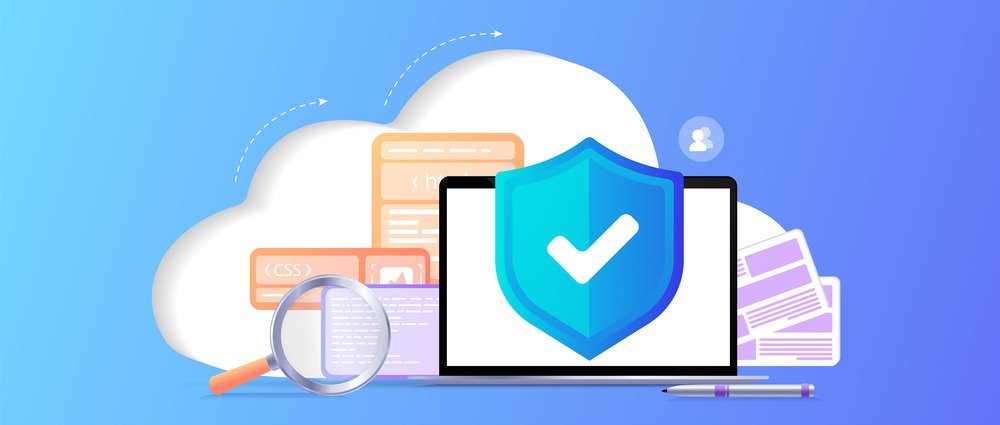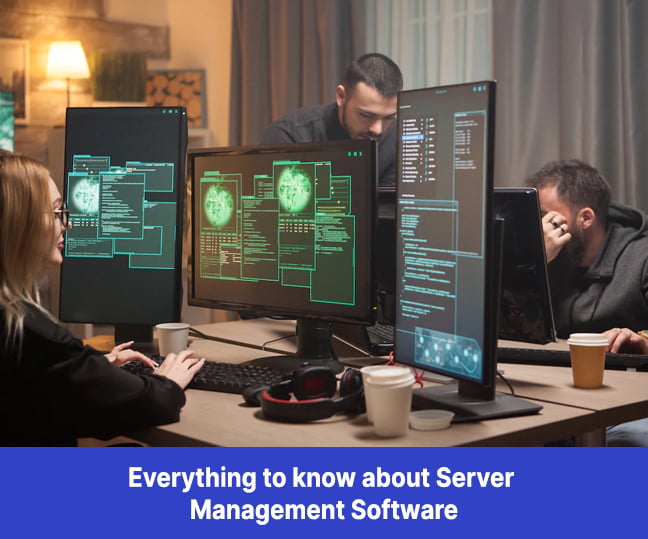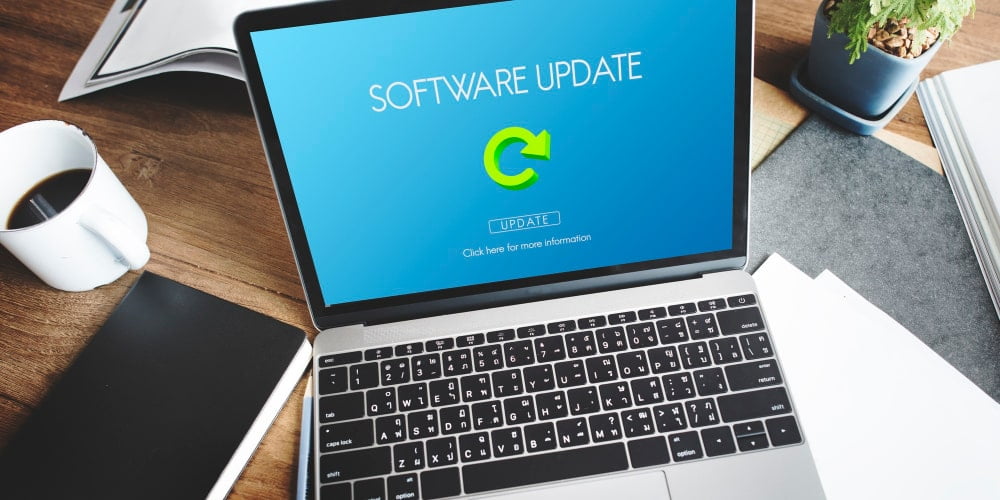Software License Management (SLM) is pivotal for optimizing software assets, ensuring compliance, and driving cost-effective operations. With organizations increasingly reliant on software solutions, the strategic management of licenses becomes paramount. However, from bolstering cost efficiency through effective license utilization to mitigating risks and enhancing operational efficiency, they now have the tools to navigate software licenses successfully.
After all, harnessing SLM’s power enables them to elevate operational efficiency, ensure compliance, and maximize software investments. In this blog, you’ll gain valuable insights into the fundamental components that constitute successful SLM, along with best practices that guide its implementation. Furthermore, we’ll explore the various types of SLM approaches available to modern enterprises, offering a comprehensive understanding of the options at their disposal.
Related blog: Ethics of Software Waste: How to Reduce Carbon Footprint by Better Managing Software Licenses
What is Software License Management (SLM)?

Software License Management (SLM) involves the strategic management and monitoring of software licenses within an organization. This proactive approach ensures that software assets are effectively utilized, compliant with licensing agreements, and aligned with business needs.
SLM serves as a proactive mechanism that empowers organizations to effectively manage their software resources from acquisition to retirement. By keeping a vigilant watch over software licenses, SLM ensures that the organization remains in control of its software inventory, usage, and compliance. Central to the concept of SLM is the recognition that software licenses are valuable assets that require careful management to extract maximum value.
Features of Software License Management
License Tracking
In the world of Software License Management (SLM), meticulous license tracking is a fundamental practice. This involves systematically recording essential details such as license types, expiration dates, and specific usage permissions. Imagine a multinational corporation utilizing SLM to monitor its software licenses. By diligently tracking license details, the organization ensures they have a clear overview of each license’s status and terms, facilitating informed decision-making and optimized resource allocation.
Usage Analysis
Software License Management tools provide insights beyond mere tracking, delving into usage analysis. These tools offer invaluable insights into how software assets are utilized throughout the organization. For instance, a software company employs SLM tools to analyze the usage patterns of a specific software application. Through this analysis, the company identifies instances of underutilization and reallocates licenses to departments with higher demand, optimizing resource allocation and reducing unnecessary costs.
Compliance Monitoring
Effective Software License Management includes vigilant compliance monitoring. This involves overseeing software usage to ensure alignment with licensing agreements and regulatory standards. Consider a healthcare institution utilizing SLM to manage software licenses. By proactively monitoring compliance, the institution ensures software tools used for patient records management adhere to stringent privacy regulations, mitigating potential legal and financial risks.
Centralized Repository
Software License Management tools offer a centralized repository, similar to a digital vault, where all software license-related information is securely stored and managed. This repository serves as a hub for critical data, ensuring easy accessibility for authorized personnel. For example, a manufacturing company leverages SLM tools to create a centralized repository of its software licenses. This enables IT administrators to quickly access license details, track usage, and make informed decisions regarding software procurement and renewals.
Best Practices of Software License Management
Regular Audits

A cornerstone of successful Software License Management is the practice of conducting routine audits to meticulously verify license usage and compliance. These audits serve as a proactive measure to identify any discrepancies or deviations from licensing agreements. By consistently reviewing software licenses, organizations ensure that their software usage aligns with authorized terms and conditions. For instance, a financial institution regularly performs audits using SLM procedures to validate software license utilization. This practice enables the institution to rectify any discrepancies promptly, minimizing the risk of non-compliance and potential legal ramifications.
Document Policies
Establishing clear and comprehensive software license management policies is crucial. These policies outline guidelines, procedures, and responsibilities related to software usage and license compliance. Communicating these policies across the organization ensures that all stakeholders are aware of the prescribed practices. For example, a technology company develops and communicates detailed Software License Management policies to all departments. This facilitates a consistent understanding of software license management practices, fostering a culture of compliance and accountability.
User Training
Providing training to employees on software license compliance is an essential aspect of effective Software License Management. Educating users about the importance of adhering to licensing agreements and proper software usage reduces the likelihood of inadvertent violations. By imparting knowledge about license restrictions and usage guidelines, organizations minimize the risk of unintentional non-compliance. Consider a healthcare organization that offers regular training sessions to its staff members regarding Software License Management practices. This ensures that employees handling medical software understand the implications of non-compliance and follow established procedures meticulously.
Automated Tools
Leveraging software license management tools for automation is a best practice that significantly enhances operational efficiency. These tools streamline data collection, tracking, and reporting processes, minimizing manual errors and administrative burdens. Automation also ensures real-time updates and accurate insights into software license utilization. For instance, a manufacturing company integrates automated Software License Management tools into its operations. These tools automate the process of tracking software installations, usage, and expiration dates. This automation reduces the likelihood of human errors, improves data accuracy, and enables timely renewal and compliance.
Tips for Successful Software License Management
Use IT Asset Management Software: IT asset management tools help you create centralized machinery to manage your digital assets. A good IT asset management solution will also have license management under its purview. This way, you will get regular updates about software licenses on the same dashboard through which you manage other aspects of IT control.
Obtain Licensing Documentation: To start with software licensing management, you need to get all license information in one place. Hardware asset management and IT asset management software can help because they serve as central repositories for all different licensing details. Further, you can assign a license manager to maintain due compliance.
Clean Up and Organize Your License Inventory: You can’t help purchasing new software licenses due to the growing operational needs. However, as per the analytics and usage requirements, getting rid of the redundant licenses is helpful too. The license inventory should be decluttered to make all upcoming renewals easily traceable.
Catalog Your Software: Making an index of all your software that contains their details, along with mentioning the allied products, can be helpful in license management. You can quickly look up the licensing details of any software product to know which one is due and when.
Types of Software License Management
Software License Management (SLM) encompasses a spectrum of approaches, each tailored to address distinct organizational requirements and operational dynamics. These diverse types of Software License Management provide organizations with flexibility and adaptability in effectively managing their software assets:

On-Premises SLM:
In Software License Management, the on-premises approach stands as a stalwart choice for organizations seeking complete control over their software ecosystem. With this approach, organizations manage software licenses for applications that are hosted within their own infrastructure. This entails the installation, configuration, maintenance, and updates of software assets on dedicated servers or data centers under the organization’s purview.
Consider a multinational financial institution that deploys on-premises Software License Management to oversee licenses for mission-critical trading platforms and portfolio management software. By maintaining licenses in-house, the organization retains stringent control over its data security and regulatory compliance. This approach also aligns with industries that demand heightened data privacy and control.
Cloud-Based SLM
Cloud-based Software License Management solutions emerge as a dynamic and agile choice, particularly in the modern era of cloud computing. This approach caters to software licenses for applications hosted in cloud environments, offering scalability, accessibility, and streamlined management.
Imagine a tech startup that embraces cloud-based Software License Management to manage licenses for collaboration and productivity tools. By leveraging cloud resources, the startup efficiently scales its software capabilities in response to evolving demands. This approach minimizes upfront infrastructure costs and optimizes resource utilization, allowing the startup to channel its resources toward innovation and growth.
Hybrid SLM
The hybrid Software License Management approach bridges the realms of on-premises and cloud-based strategies, embodying versatility and customization. This approach acknowledges the diversity of an organization’s software landscape and its unique needs.
For example, a global manufacturing conglomerate employs hybrid Software License Management to navigate its multifaceted software requirements. The company retains on-premises licenses for proprietary design software that houses sensitive intellectual property. Simultaneously, it adopts cloud-based licenses for collaboration tools, enabling seamless communication and data exchange with international partners and clients. This hybrid model empowers organizations to strike a harmonious balance between localized control and the agility of cloud resources.
Benefits of Software License Management
Cost Optimization: A foundational advantage of Software License Management (SLM) is its pivotal role in driving cost optimization within organizations. Software License Management acts as a vigilant steward, steering organizations away from excessive spending on software licenses. For instance, a medium-sized business employs SLM to meticulously track software license usage. By analyzing utilization patterns, the organization identifies surplus licenses that can be reallocated to departments with higher demand.
This approach not only curtails unnecessary license expenditures but also liberates precious resources for other strategic pursuits. As a result, financial budgets are harnessed with precision, directing funds toward critical projects and growth initiatives.
Compliance Assurance: Software License Management emerges as a sentinel, guarding against the legal and financial pitfalls of software license non-compliance. Organizations that veer from licensing agreements may face penalties, legal entanglements, and reputational damage. Consider a financial institution utilizing SLM to ensure compliance with stringent data protection regulations.
Through consistent monitoring of software licenses and meticulous usage scrutiny, the organization erects a robust bulwark against the lurking specters of non-compliance. This steadfast adherence to regulations not only mitigates legal risks but also solidifies the institution’s trustworthiness among customers and stakeholders, bolstering its position in the industry.
Resource Utilization: Effective Software License Management empowers organizations to optimize resource allocation and utilization of software licenses, leading to efficient resource management. Armed with insightful analysis, organizations gain a panoramic view of software usage dynamics, enabling them to make informed decisions about license allocation.
For instance, a manufacturing company keenly embraces Software License Management to monitor licenses for design software. By identifying underutilized licenses and reallocating them to high-demand departments, the company ensures that its software resources hum harmoniously, minimizing waste and maximizing efficiency. This strategic reallocation streamlines operations reduces bottlenecks and paves the way for seamless production processes.
Risk Mitigation: In the treacherous waters of today’s cyber landscape, software vulnerabilities can expose organizations to security breaches and data compromise. Software License Management acts as a guardian, systematically identifying potential risks by ensuring that software applications are up-to-date with the latest security patches and updates.
Imagine a healthcare provider adopting Software License Management to manage software licenses for electronic health record systems. With diligent oversight and automated updates, the provider fortifies its defense against potential data breaches, ensuring the confidentiality and integrity of patient information.
This proactive approach to risk management not only safeguards sensitive data but also preserves the provider’s reputation and trust among patients.
Enhanced Decision-Making: Software License Management serves as a compass guiding organizations toward data-driven decision-making. By providing comprehensive insights into software usage patterns and license allocation, SLM enables informed choices about software investments and deployment strategies.
For instance, a multinational corporation embraces Software License Management to manage licenses for project management software. Through data-driven analytics, the corporation identifies patterns of software usage across its various divisions, enabling it to optimize license procurement and distribution. This intelligent decision-making ensures that software resources align with business needs, fostering efficiency and strategic growth.
Streamlined Vendor Relationships: Effective Software License Management contributes to harmonious vendor relationships by facilitating transparent communication and collaboration. Organizations equipped with accurate and up-to-date software license information can engage in meaningful discussions with vendors, negotiating favorable terms and avoiding over-purchasing.
Consider a retail chain utilizing Software License Management to manage licenses for point-of-sale software. Armed with a comprehensive understanding of license utilization, the chain engages in constructive negotiations with the software vendor, resulting in cost savings and mutually beneficial terms. This collaborative approach not only optimizes costs but also nurtures partnerships built on trust and mutual respect.
Operational Efficiency: Software License Management serves as a conductor orchestrating operational harmony within organizations. By ensuring that software licenses are aligned with actual usage and demand, SLM minimizes instances of software shortages or overages. This precision streamlines operations by preventing interruptions due to license shortages and eliminating unnecessary expenses caused by surplus licenses.
Imagine a technology company employing Software License Management to manage licenses for coding and development tools. Through accurate license tracking, the company ensures that its developers have access to the software they need, fostering uninterrupted workflow and accelerating product development cycles. This operational efficiency translates to faster time-to-market and a competitive edge in the industry.

Better Budgeting: Software use is all about paying for a license that allows you to use the software per your requirements. But, without proper license management, the chances of buying unnecessary licenses are high as the purchase will not be aligned with analytics and strategies. Making purchases that best fit your budget is possible only with software license management software.
Related blog: Future of software license management – Trends and innovations to watch out for
Conclusion
Software License Management (SLM) plays an instrumental role in modern business landscapes, effectively balancing the scales of compliance and financial prudence. As technology gallops forward, the significance of Software License Management intensifies, ensuring that organizations extract optimal value from their software ecosystem. By maintaining vigilant oversight, adhering to best practices, and harnessing the capabilities of SLM tools, organizations adeptly navigate the intricate web of software licensing. This strategic approach not only safeguards against compliance pitfalls but also propels cost-effective resource utilization.
In an era where software permeates every facet of operations, Software License Management stands as a steadfast guardian of software assets. The dynamic interplay between meticulous tracking, compliance assurance, and resource optimization underpins operational efficiency and risk mitigation. As industries continue to evolve, SLM remains a major force, guiding organizations toward a future marked by agility, growth, and technological resilience.




















